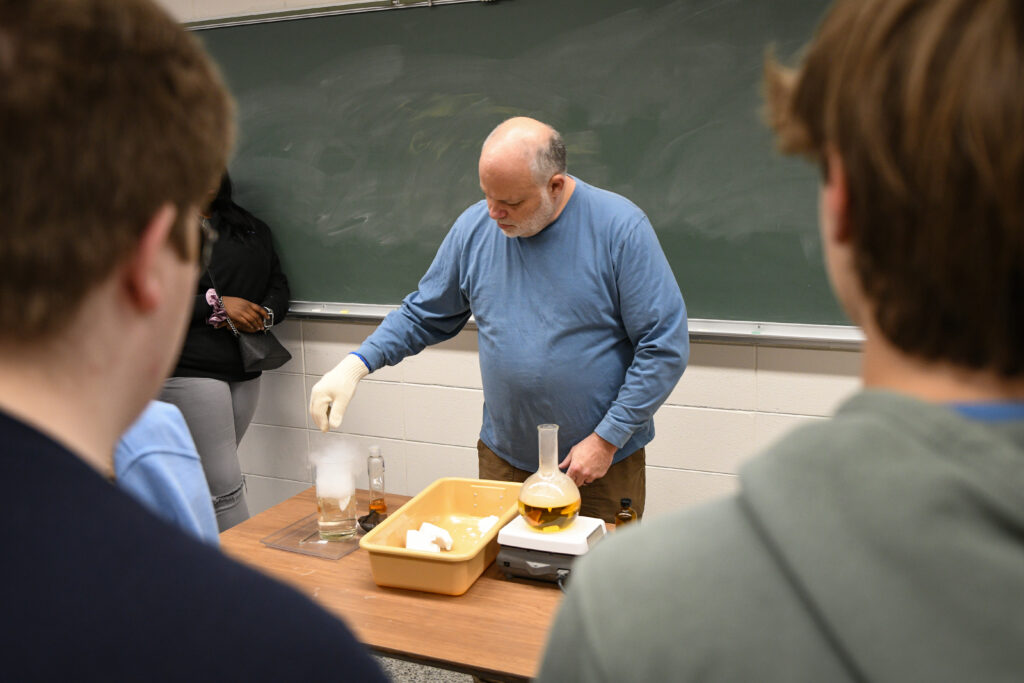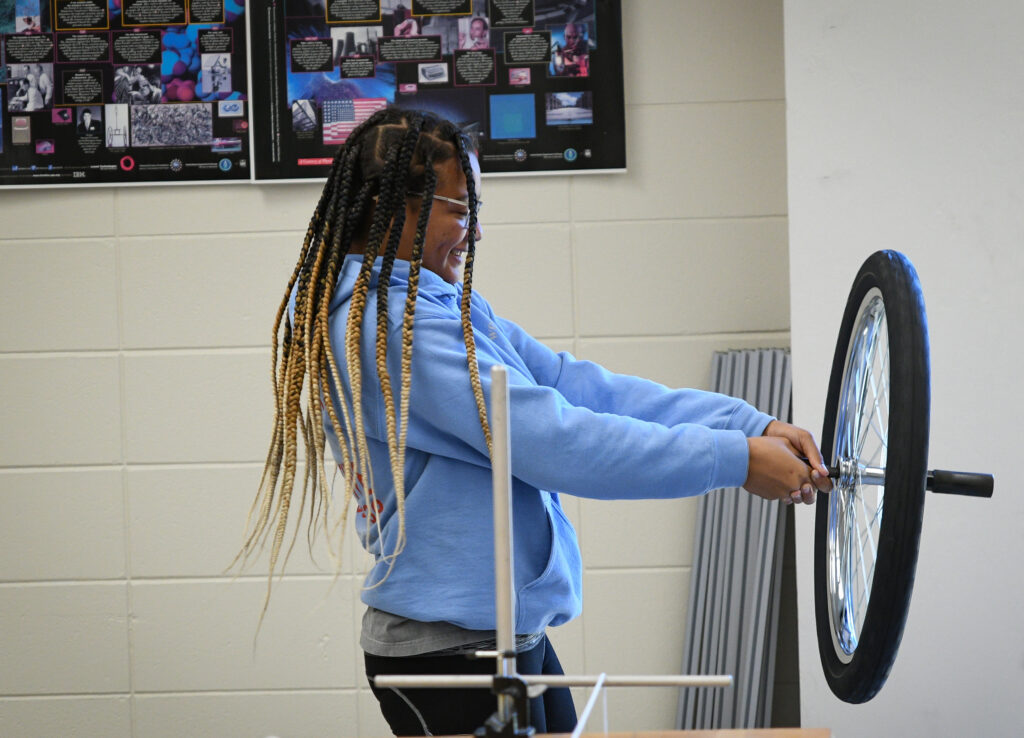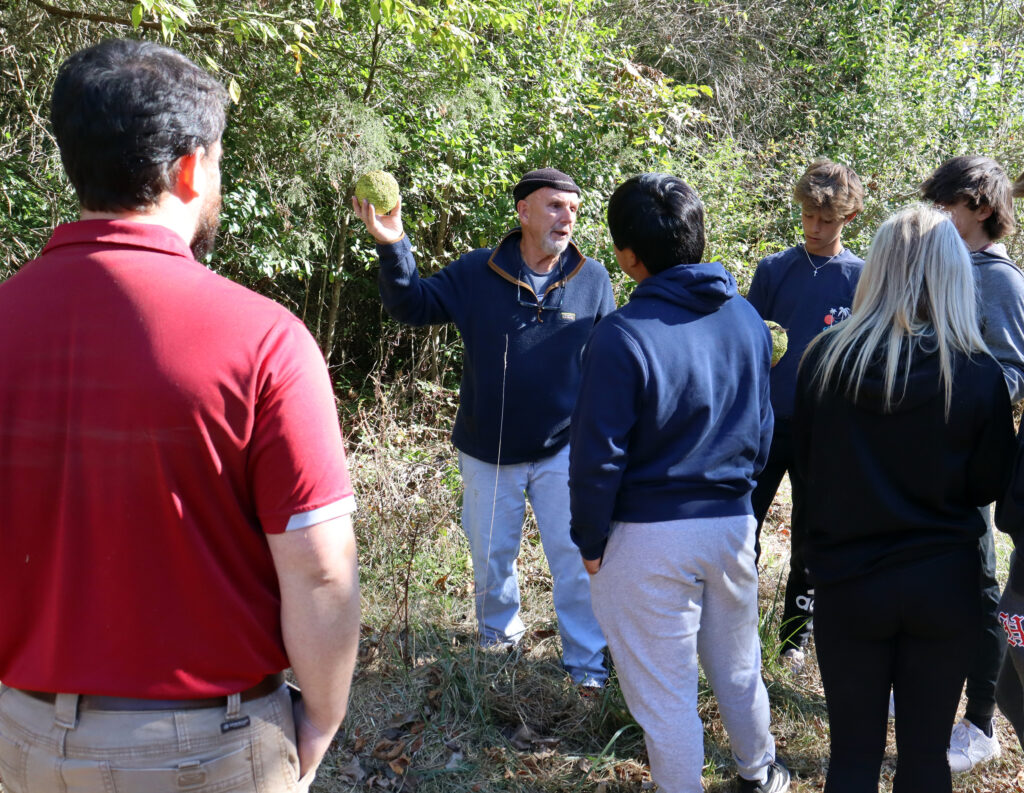
Professors share enthusiasm for sciences with high school students during campus visit
Story: Lisa Sollie | Photo: Cody Ingram
For the past few years Dr. Lucas Johnson has been a man on a mission. An assistant professor in the College of Natural Science and Mathematics at the University of West Alabama, Johnson is determined to go into every high school in the area that will invite him in.
“I want to bring science activities that will enrich their students and show them things they don’t have access to in their respective high schools,” he noted, “something I wish someone would have done for my tiny high school in Lawrence County, Alabama.” Once Johnson invites the schools to UWA, students participate in biology and physical science lab demonstrations, tour the university campus and enjoy lunch in the cafeteria.
After teaching middle and high school science for half a decade, Johnson went on to earn master and doctoral degrees in astrophysics from the University of Alabama before joining the UWA faculty in 2020. Once on campus Johnson realized he is now in a position to offer high school science teachers and their students what he had always desired.
Since his initiative began, nearly 10 schools have welcomed him in to meet with their students, and five have made the trip to UWA, including Hillcrest High school, who visited campus Nov. 2 and 3.
According to Johnson, when he and Dr. Roger Campbell, associate professor and chair of the Department of Physical Sciences, design experiments for the visiting students, they’re not focused on recruiting, although it is a natural byproduct of the school visits. “We’re thinking about what these students can see and do, what we can expose them to while they’re on our campus that they would never have a chance to do at their own schools and what they would not get to do at other universities they may visit down the road,” he noted.
Hillcrest High School student Rylan Bell said he expected a lot less of the visit than he actually experienced. “I figured we would watch more than actually be able to participate in the experiments since we don’t get to do things like this in high school. I enjoyed the hands-on learning.”

“It was a really cool experience to come to a university and meet the professors here,” added Addison Nuspl. “I didn’t think some of the things in the experiments would happen like they did, like the way the tire moved, but I experienced it myself, and it made me wonder how other things react that I wouldn’t normally think about.”

Hillcrest High School students also had a choice to learn about the field of biology either on the nature trails at Lake LU with Dr. Kevin Morse, associate professor and interim chair of the Department of Biological and Environmental Sciences or in the lab with Biology Professor, Dr. Mustafa Morsy. One Hillcrest High School Math Instructor, Nathan Kenny, brought his students on the trip so they could see how math is applied in the real world. “We often think of physics, biology and even chemistry as these separate sciences to study but they are all interconnected —they’re a web of ideas that relate to one another and mathematics is the underpinning of all those things,” he noted, “and I wanted students to see and understand that.”